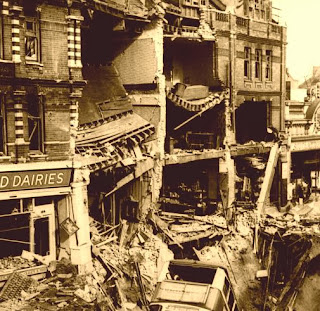Raphael Tuck and Sons
Please note: I am having issues with centering and sizing my fonts on this post!
I borrowed this book from my beau's sister-in-law. Below are all of the wonderful and unique color illustration plates from the book:
This is an antique British children's book entitled, "Granny's Stories". There is no publication date.
It was published by Raphael, Tuck & Sons, "Publishers to Their Majesties, The King & Queen, G.T.R.M. The Prince & Princess of Wales." I looked online and discovered that this book is part of "Father Tuck's Golden Gift Series", so publication was somewhere between 1900 to 1910.
The history of Raphael, Tuck & Sons is interesting, historic
and ultimately, sad. Raphael Tuck was an untrained artist,
whose natural talent had a profound impact on not only the
artist community, but around the world. He married
Ernestine Lissner in 1848. Ernestine was a savvy business-
woman, and together they built an empire, later with the
help of their sons.
In 1866, Raphael and Ernestine opened a business in
Bishopsgate (a ward of London, England) selling greeting
cards, frames and pictures. The business grew like wild-fire
as they began to sell and distribute postcards. As you can
see, there was a vast selection of styles from which to choose.
"" -Raphael had received training in graphic arts in his home
country; and, although he was not an artist himself, he had
a flare for commercial art that prompted his interest in this
new field. Upon coming to England, he caught the
imagination of the public in such a way that he was able to
create a new graphic arts business. He was so successful at
it that, according to the "London Times", he "opened up a
new field of labor for artists, lithographers, engravers,
printers, ink and paste board makers, and several other
trade classes". -tuckdb.org
In 1880, the firm opened at a
new location at 72-73
Coleman Street. The
couple's son, Adolph
initiated a contest for the
best Christmas card designs,
offering 5,000 guineas. This
sky-rocketed the Christmas
card industry which
eventually lead to the custom of the Christmas card industry,
respectfully. At the end of this contest, the business had
received over 5,000 entries from both amateur and
professional artists. An exhibition was displayed in the
Dudley Galleries, and huge crowds attended.
"It might be recorded as one of the ironies of history that a
Jew, a respected Talmudic scholar, would be remembered as
the chief exponent and promoter of the Christmas card.
Raphael discovered that Christmas card designs were mainly
secular; and in spite of the increased religious consciousness
of the Victorian age, these cards featured the gaiety and
revelry of the holiday season. In 1871 Tuck supervised the
design of Christmas cards featuring the religious aspects of
the season: Jesus Christ, the Holy Pair, the Magi, the
Nativity scene, as well as the traditional Santa Claus, holly
and mistletoe." -tuckdb.org
.jpg) |
| Above: Illustrations from "Granny's Stories" - photos by Denise Hinckley |
for other holidays such as Easter, Halloween, Thanksgiving,
New Years, and so on. Today, there are many online
(vintage, ephemera) collectors of their work, which is
frequently bought, sold through online auctions, or simply
displayed online.
In another amazing business measure at around 1900,
Raphael began an 18-month postcard competition for
"collectors". This seemed to change the focus of the artist to
the public, as the collector. The ploy worked and the public
reacted - one winner collected 20,364 postcards and another
winner submitted a whopping 25,239 cards! Other contests
continued through about 1914.
 |
| One of Tuck's paper doll collections |
The company also produced greeting cards and children's
books, as well as paper dolls and puzzles. "Movable Books"
and raised designs, under the name of the Father Tuck
series.
Production was greatly
reduced, but continued
through World War I and
into World War II, until the
night of December 29, 1940,
when the Nazi's "poured
tons of bombs on London.
By morning, Raphael
House was shell
and rubbish. Records
of seventy-four years and
40,000 or more original
pictures and photographs
by the best artists were in
ashes."




.jpg)





.jpg)







































I have a few Tuck Christmas cards! I did not know that Raphael House was bombed in the second World War. What a shame.
ReplyDeleteAnd they lived Happily Ever After. Nice finish! LOL